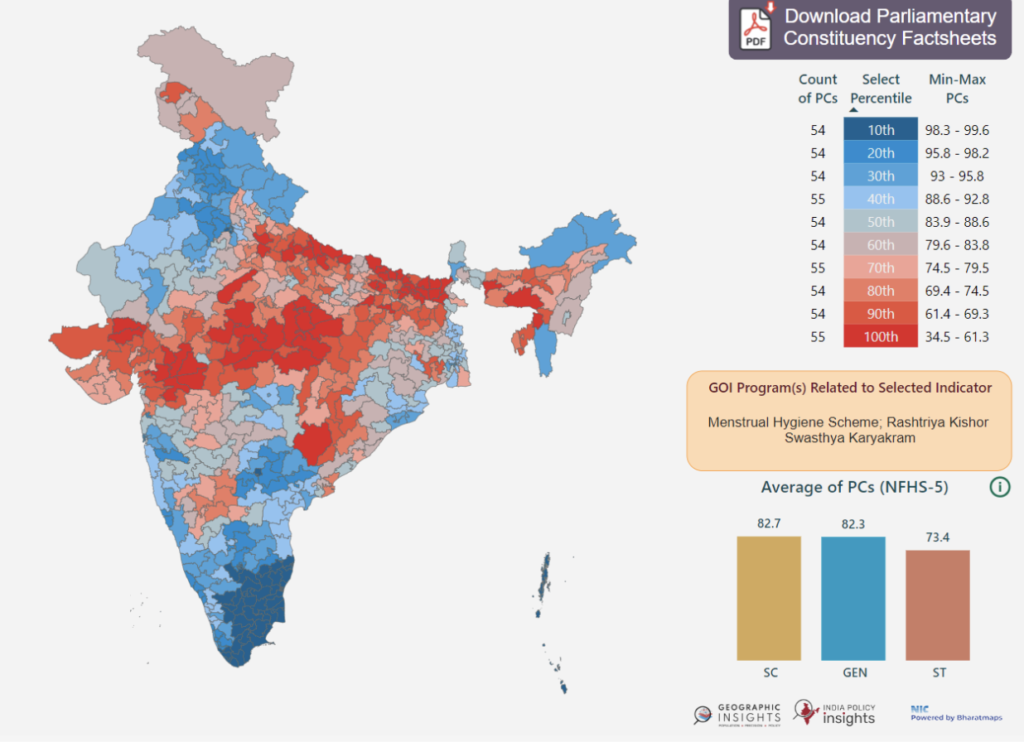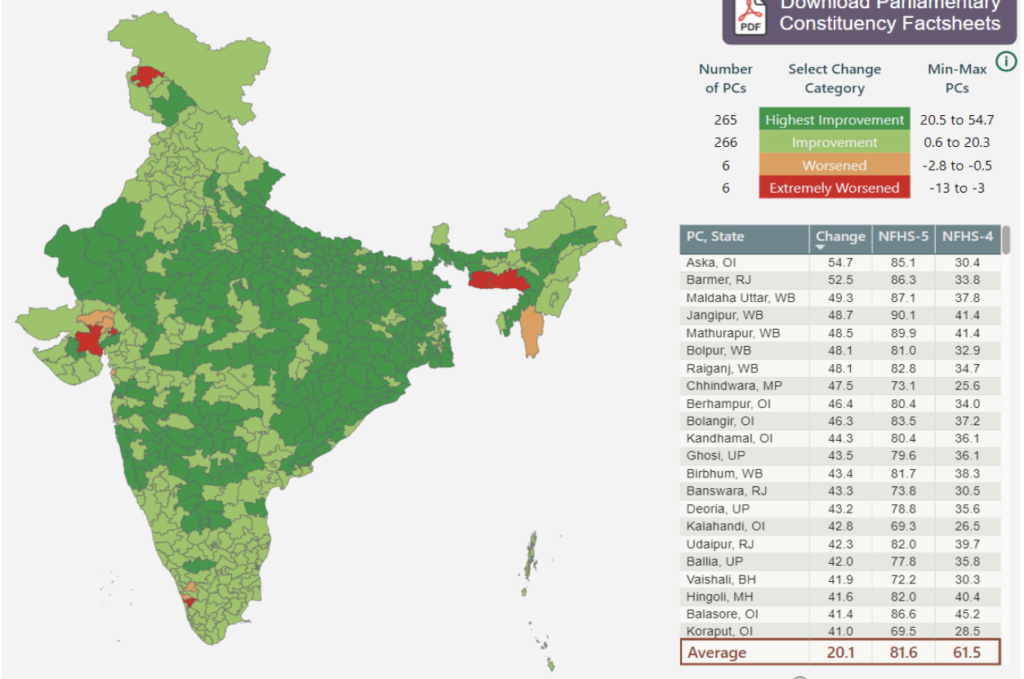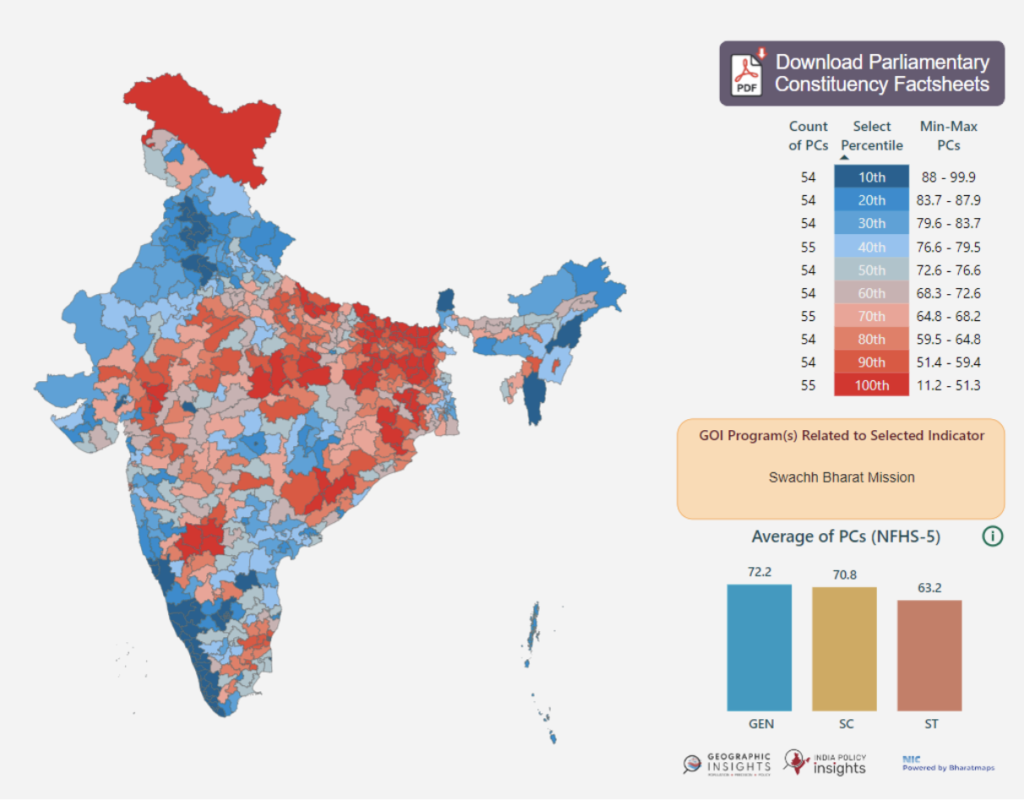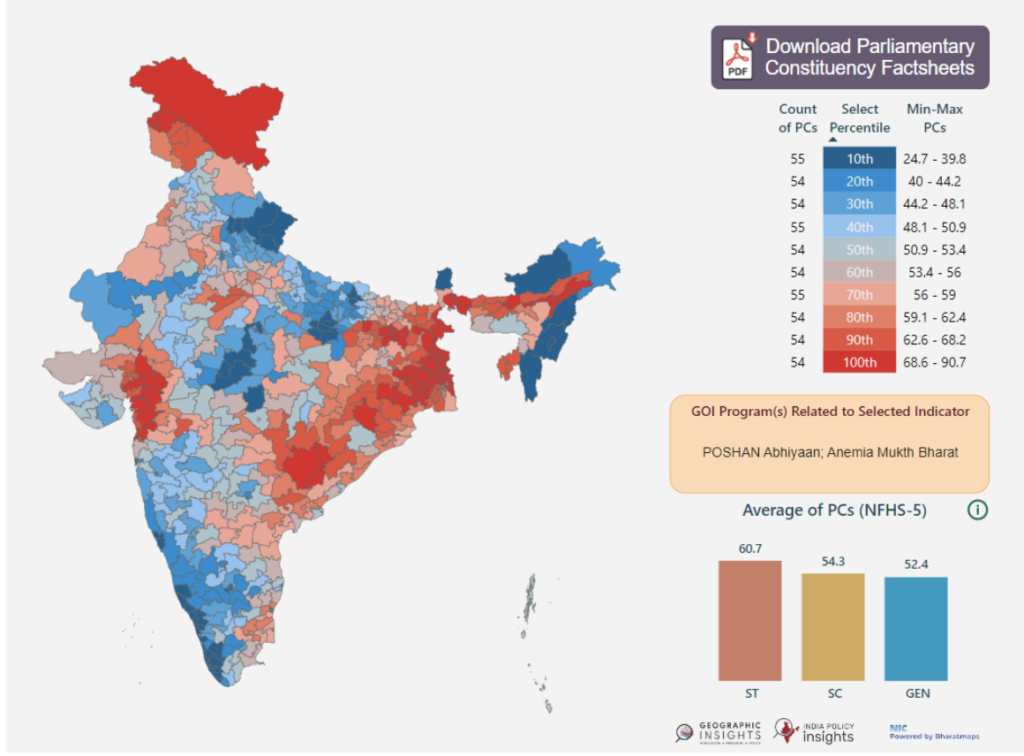Addressing menstrual hygiene requires a multi-faceted and holistic approach, as it is both caused by and affects a range of other indicators, including gender equality, health, education, and economic empowerment.
Authors: Shubham Mudgil and Dr. S. V. Subramanian
Published: July 10, 2023 in IndiaSpend
Women menstruate for a total of approximately six to seven years in their lifetime. This makes menstrual hygiene a crucial concern for women and girls. Managing menstruation hygienically and with dignity requires adequate knowledge, appropriate facilities, and a supportive cultural environment. However, taboos related to menstruation continue to dominate the mainstream narrative in India and hinder progress in improving menstrual hygiene practices.
Inadequate access to proper menstrual hygiene management has far-reaching consequences, affecting individuals physically, emotionally, and economically. In some cases, it can even lead to depression due to societal stigmatization and cultural taboos associated with menstruation. Tragically, these circumstances may lead to girls discontinuing their education. Dropping out of school has a strong negative impact on girls as they become much more likely to be married young, bear children before the age of 18, experience poorer health and nutrition outcomes and experience reduced earnings in adulthood.
In recognition of the importance of menstrual hygiene, the Supreme Court deemed it an “important issue of public interest” and directed the Central Government to develop a National Policy specifically targeting school-going girls in April 2023. This decision serves as a potent reminder of the urgent need for comprehensive action to ensure access to quality menstrual hygiene management throughout India.
In this context, this data story delves into the prevailing trends of menstrual hygiene at the level of parliamentary constituencies using data from the NFHS Policy Tracker for Parliamentary Constituencies developed by the India Policy Insights initiative at Harvard University. It also tries to highlight the consequential impact of the inadequate management of menstrual hygiene.
1) Menstrual Hygiene levels vary across regions

The current levels of menstrual hygiene vary significantly across the Indian states. These levels vary from 34.5% to 96.6% across parliamentary constituencies. Areas with low levels of menstrual hygiene (highlighted by shades of red) are concentrated in central India. Bihar (59.9%), Madhya Pradesh (61.5%), Uttar Pradesh (74%) and Rajasthan (85.8%) lie in the bottom deciles while states like Tamil Nadu (99.1%), Goa (98.1%), Punjab (95.3%), Kerala (95.2%) and Haryana (95.2%) lead the way in menstrual hygiene.
2) Menstrual Hygiene levels have improved significantly over the years
Fig 2: Change in the prevalence of menstrual hygiene between NFHS 4 and 5

Significant progress has been made in advancing menstrual hygiene between NFHS 4 and 5. An impressive 97.7% of parliamentary constituencies (PCs) registered an average increase of 20.1 percentage points in the prevalence of menstrual hygiene. Aska PC in Odisha saw the highest improvement of 54.7 percentage points in menstrual hygiene as the prevalence went up from 30.4 in NFHS 4 to 85.1 in NFHS 5. Barmer PC in Rajasthan and Maldaha Uttar PC in West Bengal followed next with each registering a 52.5 and 49.3 percentage points increase respectively.
Overall, Odisha, Bihar and Rajasthan have led the way by registering an increase of 34.5, 30.1 and 29.0 percentage points respectively. However, in the same time period, 12 PCs across the nation witnessed a decline in menstrual hygiene levels, 5 of which were in Gujarat and 3 in Kerala. For an indicator which saw vast improvement across the nation, the reasons for regression in these PCs are worth investigating and addressing immediately.
3) Access to Sanitation Facilities: An Important Element of Menstrual Hygiene

Inadequate water and sanitation facilities pose a major impediment to maintaining proper hygiene and privacy for menstruating women. A UNICEF study noted that a higher percentage of women and adolescent girls practising adequate MHM live in households with improved sanitation facilities and with safe excreta disposal on site compared to those who practice inadequate MHM. The NFHS data highlights a similar trend for Indian parliamentary constituencies (PCs).
Most PCs with low levels of menstrual hygiene (highlighted by shades of red in Fig 1) are also found to have a low proportion of households using improved sanitation facilities (highlighted by shades of red in Fig 3). States like Uttar Pradesh, Bihar, Jharkhand, Madhya Pradesh and Tripura have notably low levels of sanitation as well as menstrual hygiene. This warrants immediate attention. Interestingly, Tamil Nadu stands to be an outlier as NFHS reports very high levels of menstrual hygiene but relatively low levels of households with improved sanitation facilities.
4) Inadequate Menstrual Hygiene aggravates the risk of Anaemia

Anaemia is a significant problem among females in India, where per NFHS-5, 57% of females in their childbearing age are estimated to be anaemic in the country. The government has been promoting initiatives to ensure Iron and Folic Acid supplementation, provide fortified food for women at risk and run large-scale awareness drives. However, improvements in promoting menstrual hygiene can also play a significant role in India’s fight against anaemia. Improper menstrual hygiene management can lead to urinary or reproductive tract infections and pelvic inflammatory disease that can further lead to blood loss ultimately resulting in a higher risk of anaemia.
Studies have established “a significant association between poor menstrual hygiene management and anaemia”. This appears to be the case in Fig 1 and Fig 4 as PCs with poor menstrual hygiene overlap with PCs with high levels of anaemia among females across multiple regions in India. Therefore, it is likely that a deeper understanding of the causes of poor menstrual hygiene and addressing related risk factors could also help in curbing anaemia in the country.
Conclusion
Addressing menstrual hygiene requires a multi-faceted and holistic approach, as it is both caused by and affects a range of other indicators, including gender equality, health, education, and economic empowerment. Therefore, a comprehensive policy response to this issue must weave together education, awareness, access to affordable and hygienic menstrual products and improved sanitation facilities. By prioritizing these areas and implementing evidence-based and focused policy strategies, India can make significant strides in ensuring that women and girls have the necessary support, knowledge, and facilities to manage menstruation hygienically and with dignity.
Such efforts would also promote progress on several Sustainable Development Goals (SDGs), including SDG 3: Good Health and Well-being, SDG 4: Quality Education, SDG 5: Gender Equality, and SDG 6: Clean Water and Sanitation. Therefore, by promoting menstrual hygiene management, we can contribute to building a sustainable and equitable future for all.
Shubham Mudgil is a Public Policy Associate at The Quantum Hub and Dr. SV Subramanian is Professor of Population Health and Geography at Harvard University and Principal Investigator of the Geographic Insights Lab at Harvard.
*This data story uses data from the NFHS Policy Tracker for Parliamentary Constituencies developed by India Policy Insights at Harvard University. The tracker is accessible here.
